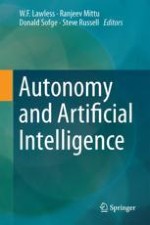2017 | OriginalPaper | Buchkapitel
4. Human Information Interaction, Artificial Intelligence, and Errors
verfasst von : Stephen Russell, Ira S. Moskowitz, Adrienne Raglin
Erschienen in: Autonomy and Artificial Intelligence: A Threat or Savior?
Aktivieren Sie unsere intelligente Suche, um passende Fachinhalte oder Patente zu finden.
Wählen Sie Textabschnitte aus um mit Künstlicher Intelligenz passenden Patente zu finden. powered by
Markieren Sie Textabschnitte, um KI-gestützt weitere passende Inhalte zu finden. powered by
